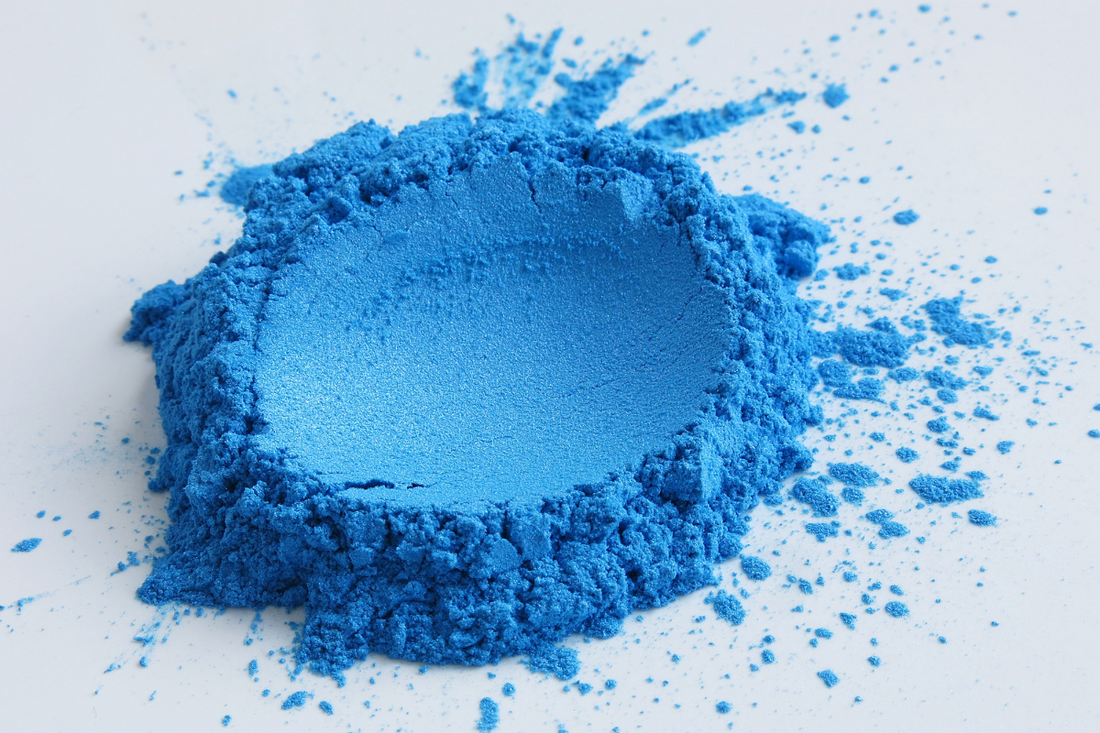Mica, a silicate mineral that sparkles and shines, might be an ingredient you've come across in a wide variety of beauty and personal care products - from eye shadows and lipsticks to your favourite artisan soaps. But what is mica, how is it used in the beauty industry, and why is it a choice ingredient for handmade soaps? In this blog post, we delve deep into these intriguing questions, tracing the journey of mica from the earth to the soap dish.
What is Mica?
Mica is a group of sheet silicate minerals that occur in a variety of forms across the globe. It's known for its perfect basal cleavage, which means it can be split into very thin sheets that are tough and flexible. The most commonly used micas in the cosmetic industry are muscovite (white mica) and phlogopite (green or brown mica).
With its inherent shimmering properties, mica is the go-to mineral for adding a touch of sparkle and shine. In its natural state, mica is usually an off-white or silver colour. Still, it can be coated with other minerals, such as titanium dioxide or iron oxides, to create an array of vibrant hues.
Mica in the Beauty Industry
Mica has become an indispensable part of the beauty industry thanks to its glittering properties, versatility, and compatibility with skin. You'll find it in numerous cosmetic products like foundations, blushes, lipsticks, eyeshadows, and nail polishes.
The mineral is beloved for its ability to refract light, which helps to give products a shiny appearance and can create the illusion of a smoother, softer, and more radiant skin tone. Its incredible versatility allows it to be blended into various shades and hues, enabling brands to offer their consumers a broad palette of colours.
Mica in Handmade Soaps
When it comes to artisan soaps, the incorporation of mica serves a couple of essential purposes:
Aesthetics
Artisan soaps are often treasured for their cleansing properties, natural ingredients, and beautiful and unique designs. Using mica can enhance these designs and make them more visually appealing. The mineral provides a vibrant colour palette, allowing soap makers to create intricate designs, swirling patterns, and striking colour combinations.
Safety
Mica is a safer alternative to synthetic dyes often used in commercial soaps. It is typically non-toxic and less likely to cause skin irritations, making it an excellent choice for individuals with sensitive skin. It's essential, however, to ensure that the mica used is cosmetic-grade and ethically sourced, given the significant concerns around child labour and unsafe working conditions in mica mines in some parts of the world.
Benefits of Mica in Morfosoaps
Morfosoaps has always prioritized using safe, natural, and ethical ingredients in our soap-making process. In using mica for colouring, we carry forward this commitment.
Morfosoaps uses mica not just for its aesthetics but also for the added safety it provides to our customers. Our choice of mica aligns perfectly with our dedication to keeping our soaps free from lard, palm oil, and synthetic fragrances. It aligns with our ethos of promoting skin health through natural ingredients.
Furthermore, the mica used in Morfosoaps is ethically sourced, ensuring that our customers can enjoy these artisan soaps' beauty and luxury without compromising our ethical values.
With its versatile properties and range of applications, mica has become a cornerstone of the beauty industry. Its role in enhancing the visual appeal of artisan soaps like those created by Morfosoaps can't be overstated. The benefits of mica extend beyond just aesthetics; its inclusion speaks to a broader commitment to safety, health, and ethical sourcing. When you pick up a bar of mica-coloured Morfosoaps, you're choosing a product that is good for your skin, the environment, and the global community.


